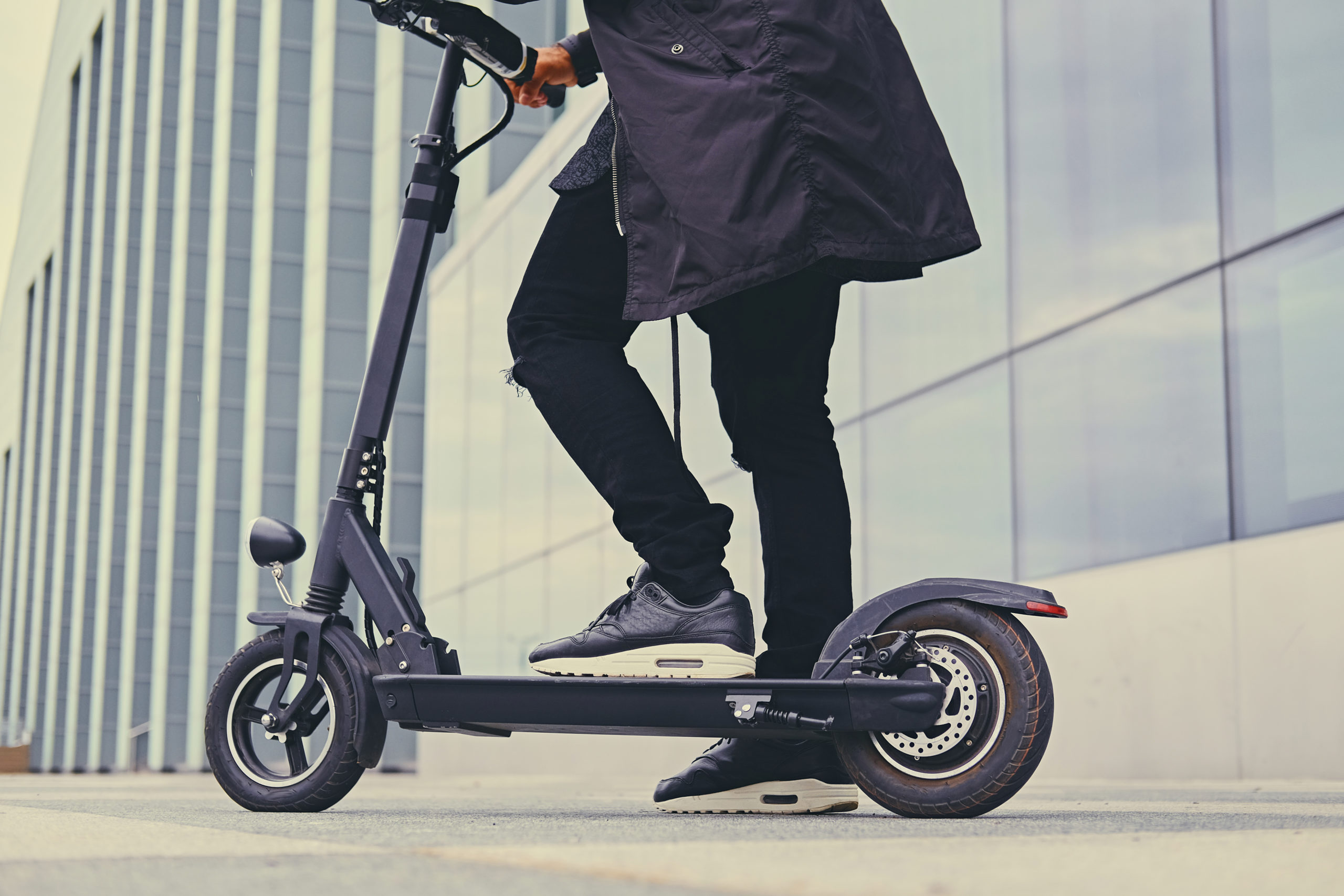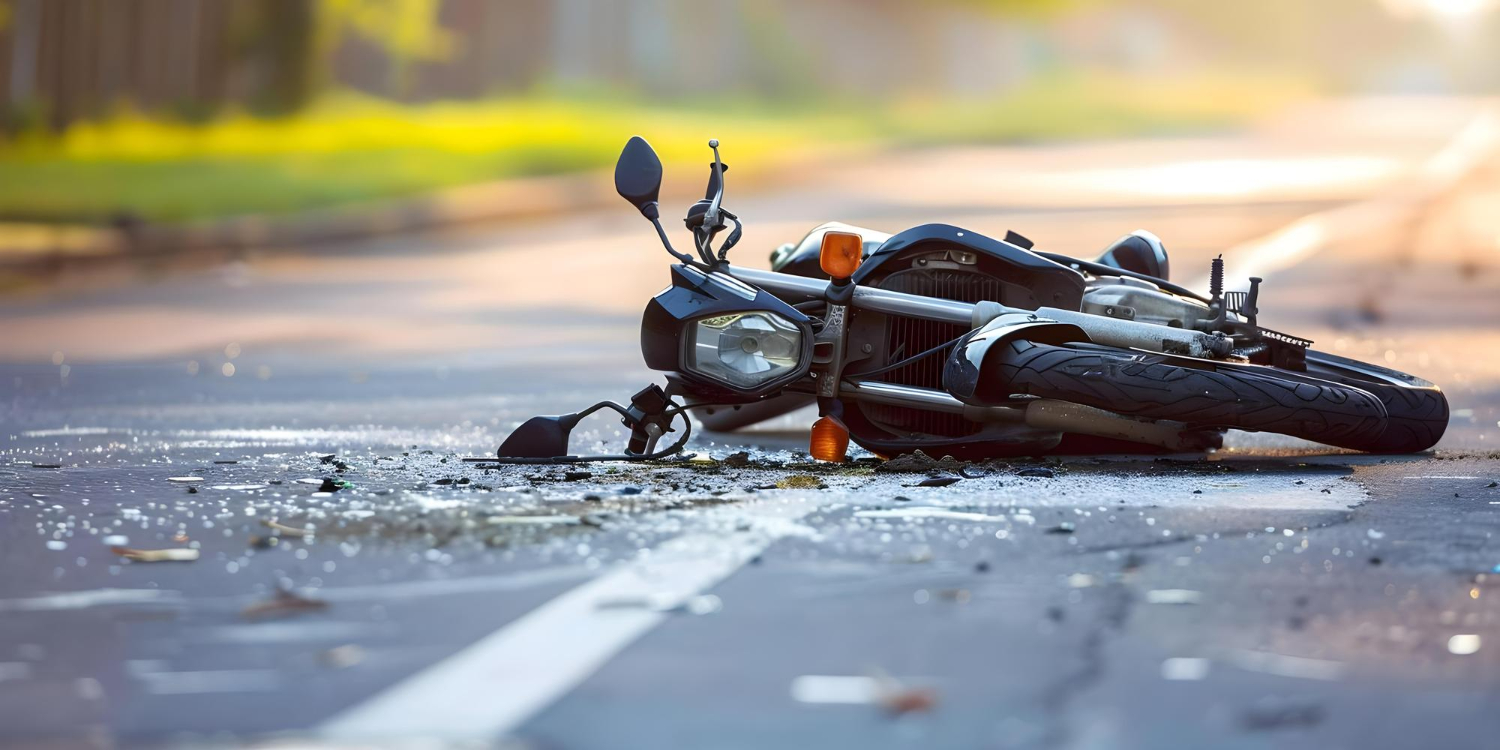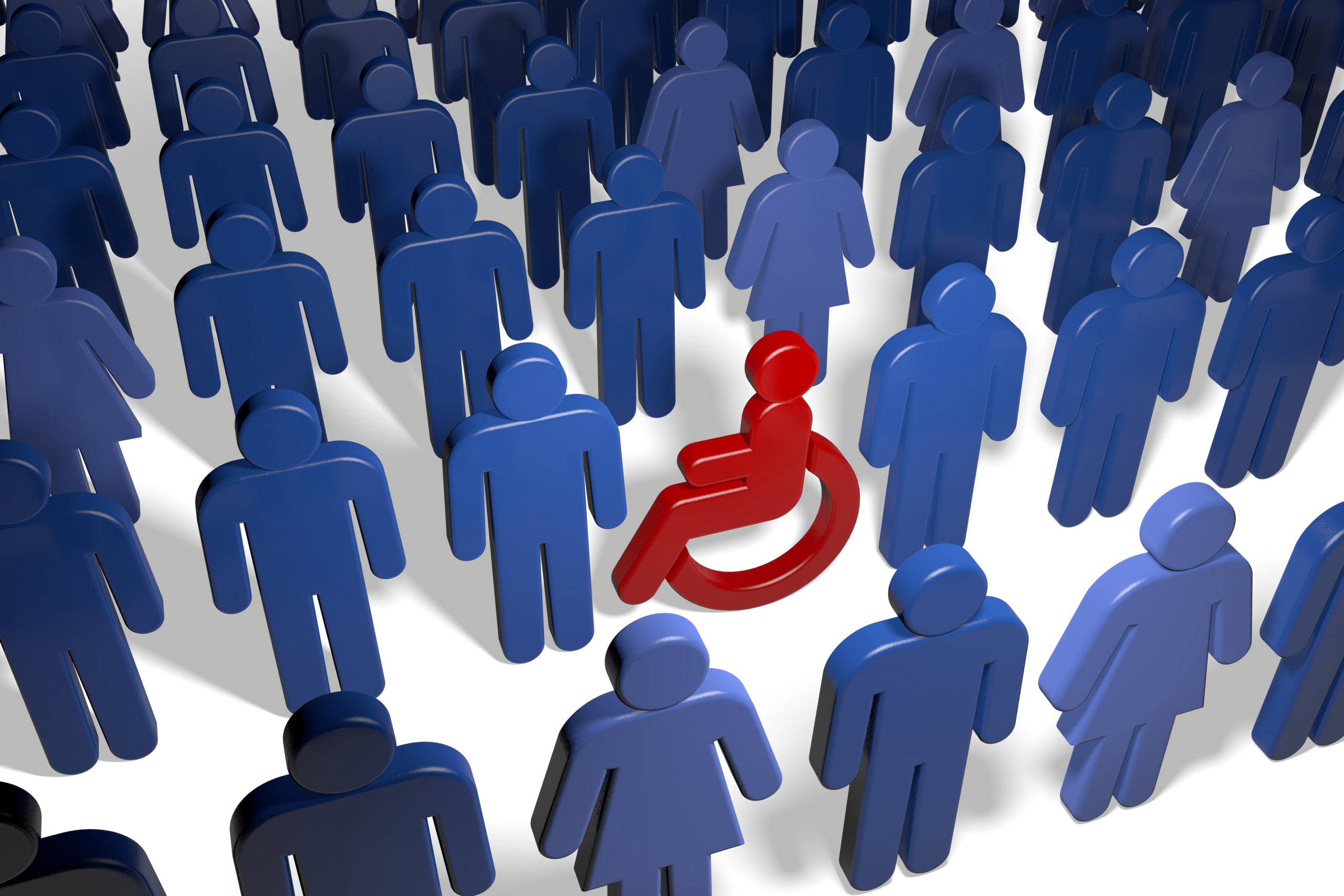If you have been around any large cities like Los Angeles, you have most likely seen or ridden an electric scooter. This eco-friendly vehicle has been around for quite some time but became even more popular during the pandemic due to its convenience and low-cost maintenance. With the spread of this new vehicle, it is also essential to know what the law states about them and in line with this, are you familiar with the electric scooter laws?
Seven E-Scooter Laws in California and Other Guidelines
1. Minors must wear helmets (California Vehicle Code 21235)
Specifically written for E-scooters, the California Vehicle Code 21235 states that an e-scooter with an electric motor, a floorboard, and handlebars requires its riders under 18 years of age to use a bicycle helmet while driving the e-scooter. The bike helmet must fit properly and be fastened.
However, recent changes in California legislation make it so riders that are 18 and older no longer have to comply with helmet regulations. This adjustment was made to account for the fact that it is unrealistic for riders to carry helmets at all times. That said, these changes are being challenged due to liability and safety reasons that support the need for helmets for all ages.
2. Maximum speed is 15 mph (CVC 22411)
This is a state law that puts a speed limit of 15 miles per hour on e-scooters using the bike lane. Going over this speed limit can result in being pulled over and a ticket that can cost up to $250.
If you have been injured, call us today at (866) 936 7349 to schedule a free consultation
3. Utilization of bike lanes (CVC 21229)
This requires e-scooters to be ridden in bike lanes (bikeways, bike paths, or bicycle paths) whenever it is available. It is referred to as “Class II Bicycle Lane” and it is located on the right edge of a street and has a solid white line on each side. It usually has a bicycle symbol inside the white borders and accommodates one-way riding.
There are 4 exceptions in riding in a Class II bike lane:
- While passing another vehicle or pedestrian
- When completing a left-hand turn
- Avoiding debris or other hazards in the bike lane; and
- When turning to the right.
4. No passengers, not allowed on the sidewalks, and MUST have a valid license (CVC 21235)
Supplementary to wearing a helmet while riding the e-scooter, the CVC 21235 prohibits the following:
- riding with a passenger on the scooter (a.k.a. tandem ride)
- driving on the sidewalk (The only time you are allowed to ride an e-scooter on the sidewalk is if you are to park and get the parked scooter onto the street.)
- driving without having a valid driver’s license or a learner’s permit
Violations of the above regulation are penalized with a traffic ticket costing $200.
5. Dismounting and walking for left-hand turns (CVC 21228)
This is a taxing rule for e-scooter riders since it forces the riders to turn left by:
- stopping after the intersection on the right curb
- dismounting or going down the scooter
- crossing the roadway on foot
These are enforced to prevent scooter accidents, mainly collision of scooters and/or with pedestrians.
6. Crosswalk regulations (CVC 275)
Under this regulation, sidewalks are considered crosswalks. These are street intersections that are approximately at right angles. It is a violation to ride an e-scooter on a sidewalk, therefore, it is also a violation to ride one in a crosswalk. The traffic ticket for this violation costs $200.
7. E-scooters must follow traffic rules as a motor vehicle does (CVC 21221)
This regulation states that all e-scooters have all the same rights and responsibilities as motor vehicles. This makes specific mention of DUI. Driving under the influence with an e-scooter can lead to the same DUI charges as well as the traffic ticket cost of $350 as the one that the motor vehicles adhere to.
8. Insurance is not a requirement to drive an electric scooter
California electric scooter laws do not precisely oblige any rider who wants to use an electric scooter to obtain insurance. Although all e-scooter riders are required by law to have a valid driver’s license, and drivers’ licenses are required to have auto insurance, then it more likely ensures that the e-scooter rider has an auto insurance policy.
9. Electric Scooter parking guidelines
Just like any other vehicle, parking correctly is a must to ensure the rider and other people’s safety. Below are the general guidelines for scooter parking:
- Park only on the area of the sidewalk closest to the curb or in specially-designated areas, such as bike or e-scooter racks.
- Make sure to leave enough space for other users of the sidewalk.
- Make sure that your e-scooter is always parked upright.
- Do not block pedestrian space by making sure that your scooter will not cause any harm and obstruction when it falls or protrude into the area where other people walk or drive to.
- Parking at corners, on and in front of curb ramps, crosswalks, or anywhere that has two pedestrian paths of travel that intersect, are all prohibited.
- Do not park on sidewalks that are narrow.
- Do not park against any building facades.
- Avoid obstructing access to bus stops and loading zones marked by a yellow or white curb and blue accessible parking spaces.
- Avoid obstructing access to fire hydrants and other fire hose access points, emergency exits, or utility boxes.
- Do not park in any access points like front doors, driveways, ramps, stairs, handrails, vehicle or bike lanes, and near the door entry systems.
- Do not park in front of, on top of, or attached to sidewalk amenities and landscaping ( i.e. kiosks, ATMs, mailboxes, news racks, trash receptacles, benches, planted areas, and the like)
10. Electric Scooter Accident Liability
Usually, the party at fault, when it comes to the liability of an accident, is financially responsible for any damages or injuries. It’s a basic personal injury law concept, which also includes electric scooters, but things can be very different. The insurance policy for an electric scooter may not cover the rider in the event of an accident due to its limited liability scope.
If you are involved in an electric scooter accident, the one who pays for damages and other forms of compensation will be the party or person at fault. An example would be:
Scooter malfunction, maker at fault:
If your e-scooter malfunctions and causes an accident, the manufacturer of the e-scooter may be held liable for the damages. However, some scooter manufacturers have a user agreement wherein the riders give their consent for the company to be not liable in case of an accident caused by their product.
Rider/Driver at fault for causing injury:
The rider will be held liable if he or she hits someone while riding the e-scooter, or if another rider crashes attempting to avoid a collision from a negligent scooter rider.
Public establishment at fault due to road hazards:
This is when a certain business establishment is under construction and its debris becomes a road hazard or a signage that becomes a road blockage making the scooter rider crash into it or crashing trying to avoid it. If this is the case, the business may be held liable for damages and injuries sustained by the scooter rider. However, be reminded that depending on the state you live in, there are additional factors like restrictions and further guidelines for using electric scooters that may add or deduct to your insurance policy covering some of the damages.
Driver at fault for causing injury:
A car driver that collides with an electric scooter rider due negligence will be held liable and to be found at fault for the damages and injuries sustained by the e-scooter rider. The driver will have to cover for the damages and medical treatment for injuries sustained by the rider.
Bike Lane Rules
The location that both motorists, bicyclists, and e-scooter riders travel on are referred to as different classes of bikeways, namely:
Class I
This bikeway facilitates off-road paths and trails and usually takes the form of multiuse trails. These are not on streets shared with vehicles and are accessible for bikes and other recreational uses.
Class II
This is the bikeway that is typically known as bike lanes. This is defined by a single striped line and facilitates only one-way travel for the riders mentioned above.
Class III
This bikeway has a label that clearly indicates as ‘bicycle route” and is well preferred by riders on bikes as compared to other alternatives. These are shared facilities with vehicles and other road users that are either separated by a pole barrier or clear white line and marked by signs appointing them as such and often includes sharrows.
Class IV
This bikeway is a physically protected bike lane that is separated from roadway traffic. It provides both one-way and two-way travel, depending on the location, and consists of cones, railways, posts, and other objects that create a physical barrier between the bike lane and the roadway.
Electric Scooter Accidents
Personal Injury cases from accidents involving electric scooters vary based on the type and details of the incident. The most common types of e-scooter accidents involve:
- A collision between a vehicle and an e-scooter or the possible collision that involves immediate avoidance that results in injury.
- An e-scooter rider that hits a pedestrian or bicyclist or avoids hitting a pedestrian or bicyclist that caused to swerve and sustain an injury.
- A crash due to poorly maintained roads, bikeways, and road hazards like potholes, fallen tree branches, and debris.
- Injury caused by vehicular malfunction such as issues with the tires, brakes, handlebars, and so on that caused the rider to lose control and crash.
- Losing control and crashing into barriers and/or the sidewalk due to being chased by an off-leash dog.
- Pedestrian stumbling on a scooter that was not parked correctly.
The abovementioned incidents are just a few examples of accidents that could happen when driving an e-scooter. Accidents involving an electric scooter have constantly escalated since its first year of popularity and have caused more than a handful of injuries, minor to severe and even fatal. The usual injuries are cuts, scrapes, bruises, sprains, broken bones, concussions, neck and back injuries, spinal cord injury, and so on. By following the electric scooter laws and guidelines, such as the proper parking and do’s and don’ts, preventing accidents and injuries related to e-scooter would be effortless.
If you have been injured, call us today at (866) 936 7349 to schedule a free consultation
Consult with a Personal Injury Attorney for Your Electric Scooter Accident
Since their widespread use, electric scooters have become one of the top-most used vehicles for transportation, along with the privately-owned car. However, as its popularity grows, so do the pedestrian accidents related to it.
Individuals who experienced accidents related to electric scooters often assume that they can claim damages on their own, without any legal help. This, unfortunately, results in an unfair settlement and low compensation.
Make sure that you receive the best compensation you deserve by talking to and hiring a formidable Personal Injury Attorney. At Mesriani Law Group, we specialize in a wide array of legal practices, including those for electric scooter accidents.
Our Electric Scooter Accident Attorneys have extensive knowledge and experience in handling such claims in California. Along with the help of our professional and amenable paralegals, our team ensures you top-quality service and assistance to pursue your claim. Give us a call now for a free consultation.
FAQs
Are electric scooters street legal in California?
According to CVC 22411, a speed limit of 15 miles per hour on e-scooters is enforced by state law. Going over this speed limit can result in being pulled over and a ticket that can cost up to $250.
Can you ride an electric scooter if banned from driving?
A driving ban or suspended license covers all motorized vehicles, which means that without a valid driver’s license you cannot drive an electric scooter.








